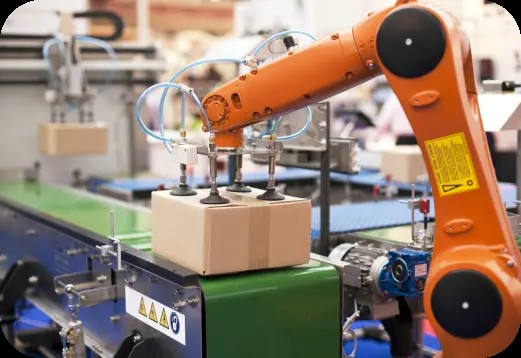In today’s fast-paced world, where e-commerce and online shopping have become a cornerstone of everyday life, the efficiency of logistics operations plays a critical role in meeting consumer expectations. One technology that has emerged as a game-changer is the automated package processing system. This innovative solution is reshaping the logistics landscape by streamlining operations, improving accuracy, and significantly reducing delivery times. In this article, we explore the intricacies of automated package processing systems, their benefits, and their impact on the future of logistics.
What Is an Automated Package Processing System?
An automated package processing system is a sophisticated integration of hardware and software designed to handle, sort, and route packages with minimal human intervention. These systems utilize advanced technologies such as conveyor belts, barcode scanners, optical character recognition (OCR), artificial intelligence (AI), and robotics to process packages efficiently. From small parcels to bulky items, these systems are capable of managing diverse package types and sizes, ensuring seamless logistics operations.
Key Components of an Automated Package Processing System
- Conveyor Systems: These are the backbone of automated package processing systems, facilitating the smooth movement of packages through various stages of sorting and processing.
- Barcode Scanners and OCR: These technologies capture essential package information such as destination addresses and tracking numbers, enabling accurate sorting and tracking.
- Robotic Arms: Deployed for tasks like picking, placing, and stacking packages, robotic arms enhance precision and speed.
- AI and Machine Learning: These technologies analyze data in real-time, optimizing routing and identifying potential bottlenecks in the system.
- Control Software: This central system orchestrates all components, ensuring they work in harmony for efficient package processing.
Benefits of Automated Package Processing Systems
- Enhanced Efficiency: Automation significantly reduces the time required for package processing, enabling faster delivery services and meeting tight deadlines.
- Improved Accuracy: By minimizing human intervention, these systems reduce errors in sorting and routing, enhancing customer satisfaction.
- Cost Savings: Although the initial investment in automation can be substantial, the long-term cost savings from reduced labor requirements and operational efficiencies are undeniable.
- Scalability: Automated systems can easily handle increased volumes during peak seasons, such as holidays, without compromising performance.
- Sustainability: By optimizing processes, these systems can reduce energy consumption and waste, contributing to greener logistics operations.
Real-World Applications of Automated Package Processing Systems
- E-commerce Fulfillment Centers: Giants like Amazon and Alibaba rely heavily on automated package processing systems to manage millions of daily orders efficiently.
- Courier and Delivery Services: Companies such as FedEx and UPS use these systems to sort and route packages across their vast delivery networks.
- Warehousing: Automated systems are also crucial in warehouses, where they streamline inventory management and order picking.
- Airports and Ports: Automated package processing systems play a vital role in handling cargo and luggage, ensuring timely and accurate delivery.
The Human Element in Automation
While the automated package processing system reduces the need for manual labor in repetitive tasks, it does not render human workers obsolete. Instead, it shifts their roles to more strategic and creative functions. For instance, workers can focus on maintaining and troubleshooting the automated systems or managing customer interactions and service quality.
Overcoming Challenges in Implementation
- High Initial Costs: Implementing an automated package processing system requires significant investment. However, businesses can mitigate this by adopting modular solutions that allow for gradual scaling.
- Technical Complexities: The integration of multiple technologies can be complex. Partnering with experienced vendors and investing in training programs can ease the transition.
- Maintenance and Upgrades: Regular maintenance and updates are crucial for ensuring the system’s longevity and efficiency. Businesses must allocate resources for these ongoing needs.
Future Trends in Automated Package Processing Systems
- Integration with IoT: The Internet of Things (IoT) will further enhance the capabilities of automated systems by enabling real-time monitoring and predictive maintenance.
- Advanced Robotics: Next-generation robots equipped with enhanced dexterity and AI will be able to handle delicate or irregularly shaped packages more effectively.
- Sustainable Innovations: As sustainability becomes a priority, automated systems will incorporate eco-friendly materials and energy-efficient technologies.
- Autonomous Vehicles: Integration with drones and autonomous delivery vehicles will extend the reach of automated systems beyond processing centers.
Conclusion
The automated package processing system is more than just a technological innovation; it’s a transformative force driving the future of logistics. By improving efficiency, accuracy, and scalability, these systems enable businesses to meet the growing demands of the digital age while staying competitive. As technology continues to evolve, the capabilities of automated systems will only expand, unlocking new possibilities for the logistics industry.
Businesses looking to thrive in the modern marketplace must embrace automation not as a replacement for human ingenuity but as a powerful tool that complements and enhances it. The automated package processing system represents the perfect synergy of technology and human effort, setting the stage for a new era of logistics excellence.
FAQs
- What is an automated package processing system? An automated package processing system is a technology-driven solution that integrates hardware and software to handle, sort, and route packages efficiently with minimal human intervention.
- How does an automated package processing system work? These systems use technologies like conveyor belts, barcode scanners, OCR, robotics, and AI to manage packages from sorting to routing, ensuring accuracy and speed.
- What are the benefits of using an automated package processing system? Key benefits include enhanced efficiency, improved accuracy, cost savings, scalability, and environmental sustainability.
- Are automated package processing systems only for large businesses? No, small and medium-sized businesses can also benefit from modular automated systems that allow for gradual scaling based on their needs.
- What challenges can businesses face when implementing automated systems? Challenges include high initial costs, technical complexities, and the need for regular maintenance and upgrades.
